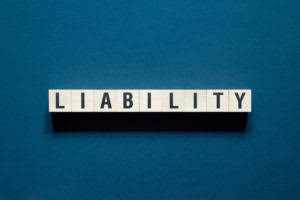
Monitoring these accounting cash flows is essential for maintaining liquidity and ensuring that the company can meet its short-term obligations while investing in long-term growth. Construction in progress impacts financial analysis by providing insights into the amount of investment tied up in ongoing construction projects. It helps evaluate the capital expenditure, profitability, and overall financial health of the business. Depreciation is calculated using several methods, including straight-line, accelerated, and units of production. Straight-line depreciation is the most commonly used method in construction in progress accounting. It involves dividing the asset’s cost by its useful life and allocating an equal amount of the cost to each accounting period over the asset’s life.
Step 1: Identify CIP Expenses

We have also provided examples to illustrate its application in real-world scenarios. By Accounting for Churches capitalizing costs in progress, businesses can reflect the true value of ongoing projects, assess project feasibility, and ensure compliance with tax laws and regulations. Accurate tracking of Construction-in-Progress (CIP) costs is fundamental to maintaining financial integrity and ensuring project success.
See our Subcontractor Focused Project Management Cloud Software in Action.
- Optimize your construction project’s financial health with effective CIP accounting strategies and insights for modern multi-project environments.
- Construction in progress impacts financial analysis by providing insights into the amount of investment tied up in ongoing construction projects.
- As the construction progresses, the company updates the CIP account with additional costs.
- Businesses must prepare accurate, up-to-date financial reports that account for their expenses and profits.
These challenges can result in financial inaccuracies that disrupt project timelines or budgets. Businesses should focus on implementing systems that cip accounting automate these processes to ensure efficiency and reduce the risk of errors. CIP stands for Cost, Insurance, and Freight, a term that has been widely used in international trade and shipping. In accounting, this acronym has a different connotation, specifically in the context of Construction in Place.

Depreciation Expense Account Vs. Allowance for a Depreciation Account

CIP accounting is a powerful tool for organizations to measure financial performance, track project costs, and make informed decisions. By understanding the key principles, benefits, and limitations of CIP accounting, organizations can unlock its full potential and gain a competitive edge in the market. Whether in construction, manufacturing, or IT, CIP accounting is an essential tool for businesses seeking to improve their financial performance and drive growth. These costs can include materials, labor, equipment, and overhead expenses, such as insurance and taxes. It ensures clarity for stakeholders and auditors by providing an accurate view of active commitments in ongoing projects.

Payroll & Tax
For instance, if a project is 60% complete, 60% of the total contract revenue can be recognized. This approach not only smooths out revenue over the project’s duration but also helps in matching costs with revenues, thereby offering a clearer picture of profitability. When costs are incurred during the construction or development phase of a project, they are initially recorded as CIP on the balance sheet. These costs include direct expenses, such as materials, labor, and equipment, as well as indirect costs, such as permits, licenses, and supervision fees.
- These tools offer features like Gantt charts, resource leveling, and critical path analysis, which help in optimizing resource distribution across various projects.
- It simplifies tracking so you can confidently manage budgets and ensure accurate, reliable financial records — all while focusing on successful project delivery.
- The basis for the effort expended can be labor hours, the material used, or machine hours.
- CIP, which stands for Capitalized in Progress, is one such term that plays a crucial role in financial reporting.



ឆ្លើយតប